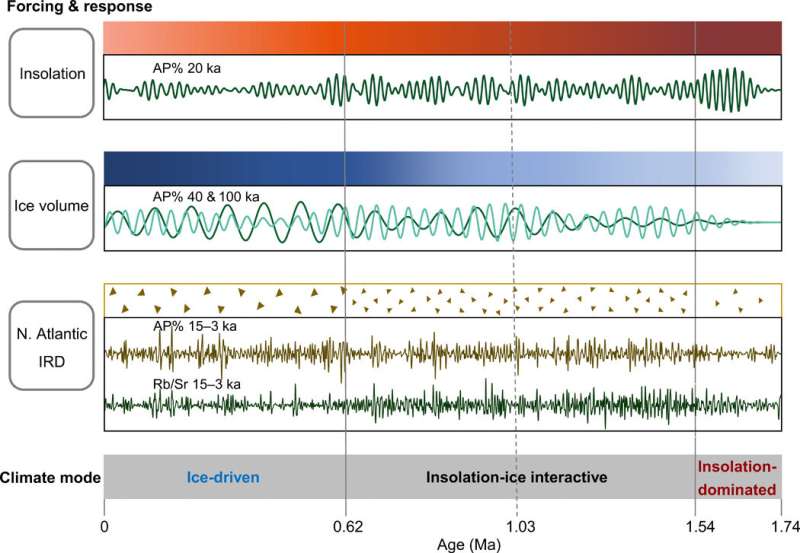Comprehensive picture of vegetation and climate on Tibetan Plateau during Quaternary ice ages

The Tibetan Plateau has long been a focus of geoscientific studies due to its importance in global tectonics as well as Asian and global climate change across a wide range of timescales.
However, little is known of its environmental history through the Quaternary ice ages, which hinders our understanding of the dynamic association between the Tibetan Plateau and large regional- and global-scale environmental changes.
Zhao Yan's team from the Institute of Geographic Sciences and Natural Resources Research of the Chinese Academy of Sciences revealed a comprehensive picture of vegetation and climate on Tibetan Plateau during the Quaternary. Their study was recently published in Science Advances.
The researchers aimed to understand the evolution of the Quaternary vegetation and climate in Tibetan Plateau as well as its links to the interactions of low-latitude insolation and high-latitude ice volume forcing.
They drilled a continuous 573-meter high-quality lake sediment core from the Zoige Basin in eastern Tibetan Plateau. Then they obtained the first high-resolution (~600-yr) record of the vegetation and climate changes at orbital and millennial scales over the last 1.74 million years (Myr).
The results showed that the low-latitude insolation forcing dominated by precession has been driving the evolution of the Tibetan Plateau vegetation and climate over the last 1.74 Myr.
With the progressive increase of global ice volume, the Tibetan Plateau climate and vegetation can be described by three successive modes, i.e. an insolation-dominated mode (1.74-1.54 Myr), a transitional insolation-ice mode (1.54-0.62 Myr) and an ice-driven mode (the last 0.62 Myr). The influence of North Atlantic millennial-scale variability was established from ~1.54 Myr.
"The significance of this study lies in filling the data gap of the high-resolution Quaternary record of vegetation and climate changes in the high-altitude monsoonal region of the Tibetan Plateau," said Prof. Zhao.
"We provided a comprehensive picture of how the interaction of low-latitude insolation and high-latitude ice volume forcing shaped the evolution of the climate, which is different from the previous inference that the plateau climate is predominantly linked to glacial cycles, and revealed the pervasive influence of the North Atlantic ice-rafting history on the millennial-scale variability during the past 1.54 Myr," she added.
More information: Yan Zhao et al. Evolution of vegetation and climate variability on the Tibetan Plateau over the past 1.74 million years, Science Advances (2020). DOI: 10.1126/sciadv.aay6193
Journal information: Science Advances
Provided by Chinese Academy of Sciences





















